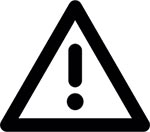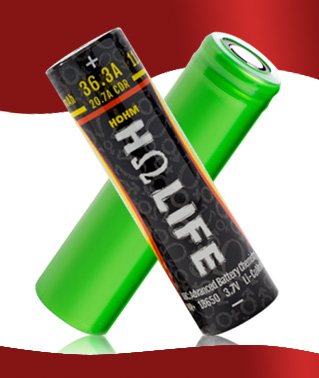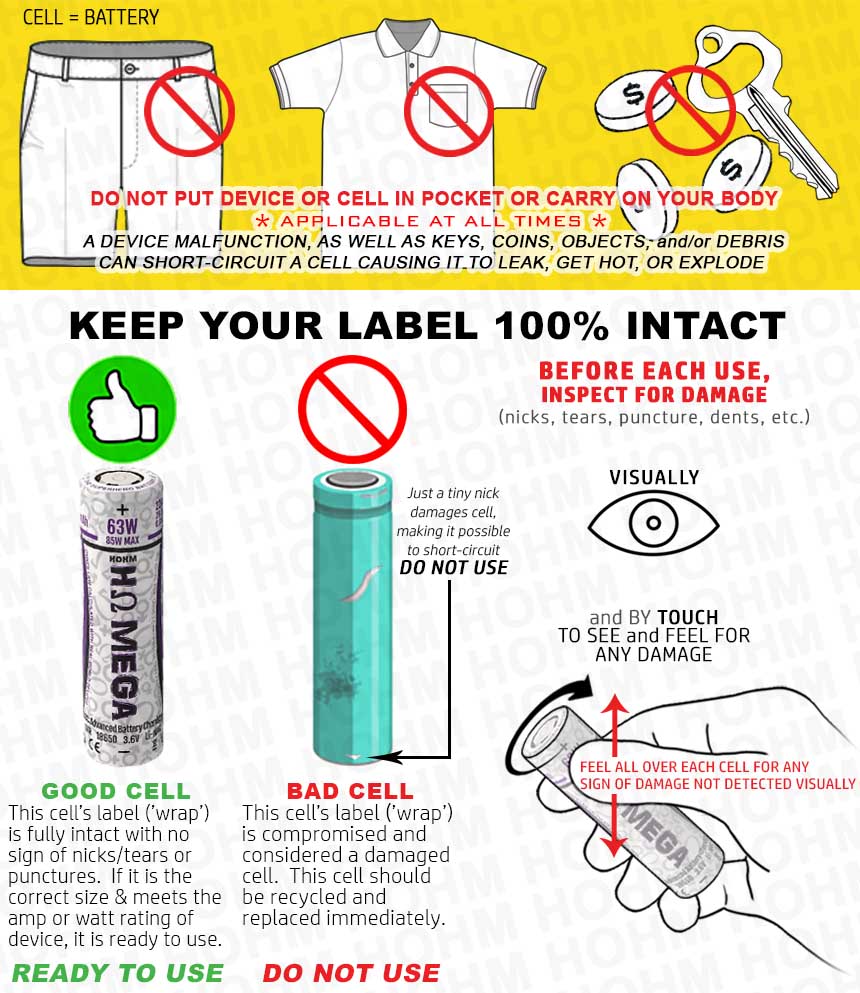Charging and Battery SAFETY
NEVER LEAVE A BATTERY CHARGING UNATTENDED
LITHIUM ION BATTERIES



WARNING: LI-ION CELLS HAVE INHERENT RISKS. IF MISUSED OR MISHANDLED, CELL CAN EXPLODE CAUSING SEVERE BURN INJURY, FATALITY, and PROPERTY DAMAGE.
READ BELOW THOROUGHLY –
- NEVER store an uncovered battery in your pocket, purse, or anywhere it may come into contact with metal (loose change, keys...)
- Disconnect battery when not in use
- Use battery only for its intended use - Never use a battery in an appliance it is not intended for
- Do not leave battery on charger once it is fully charged
- Never disassemble, modify, or solder a battery
- Do not place battery in fire or water
- Never charge with an unspecified or modified charger (Do not use a charger that has a mAh rating higher than the total battery capacity)
- Never charge a battery that has been damaged
- Maintain your battery and charger - make sure the connections are clear and clean
- Dispose of battery properly
General information regarding Lithium-ion Batteries
Lithium-ion batteries are common in consumer electronics. They are one of the most popular types of rechargeable battery for portable electronics, with one of the best energy densities. [Source: http://en.wikipedia.org/wiki/Lithium-ion_battery]
SAFETY HAZARDS of BATTERIES

Battery technology is at the heart of much of our technological revolution. One of the most prevalent rechargeable batteries in use today is the lithium-ion battery. Cell phones, laptop computers, GPS systems, iPods, and even cars are now using lithium-ion rechargeable battery technology. In fact, you probably have a lithium-ion battery in your pocket or purse right now!
Although lithium-ion batteries are very common there are some inherent dangers when using ANY battery. Lithium cells are like any other technology–if they are abused and not used for their intended purpose catastrophic results may occur, such as: first, second, and third-degree burns, respiratory problems, fires, explosions, and even death.
Please handle lithium-ion batteries with care and respect.
User Safety Precautions
Short-Circuiting
- When the battery is not in use, you MUST disconnect the battery from the battery connector. When the battery is connected to the battery connector, do not leave unattended since the two wires with the alligator clips can touch which will heat up the battery. Short-circuiting will damage the battery and generate heat that can cause burns. [E-CIGARETTE Note: Does not apply to e-cigarettes. Do not attempt to charge an e-cig with alligator clips.]
[E-CIGARETTE NOTE: CHARGE BATTERY ONLY. Do not leave other devices attached. Example: Remove Clearomizer from Battery when charging through a USB Pass-through.]
- Don’t leave the battery in the charger once it is fully charged. The battery charger will flash on and off with a red indicator light every 20 seconds when the battery is fully charged. Overcharging the batteries will not increase the performance and could lead to damage.
- [E-CIGARETTE NOTE: Once battery is charged, the indicator light will be solid green. Red means it is charging.]
Disassembly [or Modifying a Battery]
- Never disassemble a battery as the materials inside may be toxic and may damage skin and clothes. [E-CIGARETTE NOTE: Never modify an E-cigarette battery]
- DO NOT place a battery in fire; this may cause the battery to rupture.The electrolyte is very flammable and if an ignition source exists, then fire and even an explosion could result.
- NEVER place batteries in water, as this may cause the battery to rupture and release poisonous gasses. Furthermore, when the electrolyte is combined with water, there is the potential for hydrofluoric acid to form–an extremely toxic and corrosive substance. (To learn more about hydrofluoric acid, visit the following link to the Centers for Disease Control’s website: http://www.bt.cdc.gov/agent/hydrofluoricacid/basics/facts.asp)
Soldering
- Never solder anything directly to a battery. This can destroy the safety features of the battery by damaging the safety vent inside the cap.
Charging
- Never charge with an unspecified charger or specified charger that has been modified. This can cause breakdown of the battery or swelling and rupturing.
- Never attempt to charge a battery which has been physically damaged.
- Avoid designing airtight battery compartments. In some cases, gases(oxygen, hydrogen) may be given off, and there is a danger of a battery bursting or rupturing if ignited by sparks.
- Do not use a battery in an appliance or purpose for which it was not intended. [E-CIGARETTE NOTE: Do not use a charger that has an mAh rating higher than the total battery capacity. Example: Never use an eGo 420 mAh charger with a 280 mAh pen-style battery.]
Safety Procedures
- If the foil packaging on the battery does break, vent the room and leave area.
- If a fire starts, call the fire department immediately. The only extinguisher that will work on a Lithium-ion Battery fire is a Class D Fire Extinguisher or Dry Sand or Dry Table Salt.
Battery Disposal
Lithium-ion batteries are found in many electronics like laptops, digital cameras, power tools, and cordless phones [and Electronic Cigarettes]. These batteries are very popular because they can be recharged and because they are able to supply power for a long period of time. However, even lithium-ion batteries reach a point where they can no longer hold a charge and need to be disposed of. When this time comes, it is important to know how to recycle the battery, and not simply put it in a trash can. Determine your states recycling policy.
There are many reasons to recycle these batteries rather than throw them away where they may end up in a regular landfill. This is because they enter the solid waste stream and can contaminate soil and water. Please check with your [city or state] on their policy of recycling of batteries.
How to Find a Certified Recycler: https://www.epa.gov/smm-electronics/certified-electronics-recyclers#findcertified





